Bud Spangler (December 7, 1938 – January 16, 2014)
Drummer. Producer. Broadcaster.
One of the most influential people in my life was my uncle Bud Spangler, a drummer, radio presenter, recording engineer & producer as well as producer of live jazz concerts. I wanted to write this essay as a tribute to him. I built much of my essay around an interview that Bud did with Mr. Robin Darling when he was in Detroit to perform at the Montreux-Detroit Jazz Festival. The interview was for the Oral History Project as part of a Cass Corridor Documentation Project on April 7, 2011. This was through Wayne State University in Detroit, Michigan, and the interview was done over the phone. The complete interview can be found here: https://library.wayne.edu/resources/digital/audio/Spangler_Interview.pdf
My late uncle, Bud Spangler, was born in Norwalk, Ohio, not far from Sandusky and Cedar Pointe. In an interview with Robin Darling on April 7, 2011, at Wayne State University, he said: "The high school in our town was about two blocks from our house, but the football field where they marched and practiced was across the street from our house. So, every day they would come marching down the street and go into the football field across the street. So, from as early as I can remember the marching band was across the street and the drum majorette was my babysitter, so it was OK with her and it was OK with my mom. I would go and march up and down the sidelines along with the band. And the drums always thrilled me. The drums just thrilled me! So, I got to hear music live in that manner.
"And then we (the Spangler family) moved to Detroit. My dad got a job in Detroit and actually lived in Wyandotte. And we used to go back to Norwalk to visit relatives. And I was fooling around with my--we didn't have a record player at our house, but my uncle Eddy had this great collection of stuff and I didn't know anything about jazz. I started listening to stuff there and I came across this record by Bob Crosby and the Bob-Cats playing 'South Rampart Street Parade.' And unbeknownst to me at that time, marches were a large part of the repertoire of early New Orleans, 'cause that's the music that they-- the slaves were taught to play for various events and so forth. And then, after the Civil War when they were playing in their own clubs and a lot of stuff was based on march music. And so, I heard this Bob Crosby thing and it was essentially a march but it was so wide open and swingin' and exciting. And I said, 'What's this? What's this?' and they said, 'Oh, that's jazz.' And so, I felt very fortunate inasmuch as I was introduced to jazz at the beginning of jazz's history. And as I grew older, I learned, step by step. I learned swing, I learned bebop, I learned avant-garde, every step of the way. So, there's no area of the music at all that I had any negative feelings about. And I have some knowledge of all of it."
Bud went on to tell Darling: "Well, I got my--my dad had been a drummer it turned out. And, he had a bass drum in his attic back in Wisconsin. (Bud's father, Robert, was born in Wisconsin and later moved to Ohio.) And one summer they let me bring it home. And, we had a neighbor who was the drummer; he gave me a pair of brushes and a pair of sticks and I (laughter) turned the bass drum on its side and played it like a snare drum. And my best friend was a trumpet player, so the two of us would put on these little concerts in the back yard and stuff like that for the neighbor kids. And then they realized I was serious about it, and they bought me a snare drum and I started taking lessons. And I worked my very first gig when I was in the seventh grade."
Darling: 'What were you doing in that gig?' Spangler: "Dance music. We were playing at the junior high school. My teacher, my drum teacher, was also the band director of a couple of the schools in town. And so we played all kinds of stuff, including jazz and some of the pop tunes from the era, which were usually ballads, like 'Harbor Lights' and 'Blue Skies' and tunes like that, you know. So, I got a chance to play all kinds of music and met some of my very first musician friends, some of whom are still friends and still playing. And that was--God that had to have to be sometime in the early fifties [1950s]." Darling: 'So, did you continue to play gigs all throughout high school as well?' Spangler: "Very much so. As a matter of fact, I even had my own band while I was still in grade school. And when I went to the public high school--I went to Catholic grade school, St. Joseph's--and I started in grade school to lead a band; and we'd play for dances at the high school. So, by the time I was a freshman in high school people thought I had been there for years. So, yeah, it was a great opportunity; we had a lot of fun." In high school Bud played gigs with saxophonist Dick Lozon around the Downriver area. I knew Dick Lozon and even recorded a CD with him as he stayed active for many years. A lovely man.
Bud went on to attend Michigan State University and played local gigs. Continuing in Darling's interview, Bud goes onto say: "Michigan State was full of talented musicians. Being right in the center of the state, musicians from Jackson and Ann Arbor and Battle Creek and Flint would come through Lansing. And I got to play with a whole lot of wonderful musicians. My main mentor is still playing, a tenor saxophone player named Benny Poole, who lived in Jackson. I would work with Benny on a regular basis, at least once every weekend. And then I had this wonderful accident. I was the drummer on a Saturday morning TV show that we had on public television there. The host of the program graduated, and because I was always able to fill time by bantering with him, the producer of the program asked me if I would like to be the new emcee. Of course, I was terrified, I was 19." This would have been circa 1957. I used to have a tape of a 45rpm recording of the Benny Poole Band doing 'Lulu's Back in Town' by Fats Waller with Bud on drums. I've been crazy about that tune ever since.
Bud felt it was a great opportunity. He was doing interviews, and sometimes he played drums in that band. The show was on opposite "American Bandstand," and the idea was to present an alternative to the Dick Clark formula with live music with Benny Poole. They had a very, very good professional jazz group on the show.
The first Newport Jazz Festival was in 1954. The very idea of an outdoor jazz festival was just catching on, so it was a novel concept. Duke Ellington would often have his band play a dance palladium in Atlantic City or some such gig to keep his guys working in the summer. Stan Kenton had a Summer Jazz Workshop at MSU. This where Bud met trumpeter Marvin Stamm (who also played with Kenton and Woody Herman) and saxophonist Charlie Mariano (who made quite a name for himself with Charles Mingus). Marvin was around Bud's age; Charlie was a good 15 years older. Bud, a resourceful guy, hired them both on his gigs over in Saugatuck, a resort town on the west side of the state. He also hooked up with a young drummer named Paul Motian, who would assist my uncle in getting some cool gigs in Detroit and Cleveland with Mose Allison. Motian went on to worldwide fame with the Keith Jarrett Quintet, among other groups.
After graduating from MSU with a degree in Radio and Television, Bud took a job at WJCT, a public TV station in Jacksonville, Florida. He told me many times that he didn't enjoy living there. "It wasn't [my] kind of scene, although there were a lot of very fine musicians in Florida. So, I got to play. They thought very highly of Midwestern style drummers. And so, I worked probably two or three nights a week and it was pretty nice. [They were] some very good players who had been on the road with Woody Herman and Basie and people like that and they'd settled in Florida."
Bud then returned to MSU to get his graduate degree and work for the university's radio and TV stations, WKAR. Monday night he did a radio show call called "Jazz Horizons," and also a Saturday afternoon show that he called "Album Jazz," where he would play one full side of a new release, probably about five albums in all during the course of the show.
Meanwhile, he was playing gigs at night with some very good people. During his summer break he would head to Detroit and hang out and meet people like Kenn Cox. Bud told Darling "Cox and I liked each other's playing very much right off the bat and liked each other's personalities and hit it off. And [there was] a wonderful tenor player named Ronnie Fields. And I was still playing with a lot of people back in Wyandotte that I had played with. So, my summers, I was doing a lot of playing and meeting people in Detroit. And we actually--Kenny and Ronnie and I've forgotten who the rest of the band was at this point--but we were actually one of the first bands to play at the Minor Key."
Bud went on to say: "The Minor Key was, later on, the jazz institution. It was an amazing thing. And Detroit was so happening at the time. I remember there was a club on Tireman-- the Blue Bird Inn. And I went in there just on a weeknight, no cover charge. And the band that was playing was Barry Harris on piano, a wonderful bass player named Will Austin, Roy Brooks on drums and Joe Henderson, just playing a gig on a weeknight, you know. And that's how strong the scene was, is that the so-called average players were people of that caliber. When the Minor Key just was getting off the ground, they needed to sort of get their feet wet and they were hiring local bands. And so I played there quite a few times before they went into booking the major national bands." Bud saids this was about 1961.
He stayed in Lansing at WKAR, playing around town and coming back to Detroit occasionally for gigs until 1967, when he took a gig at Detroit's public television station, WTVS. That July, what some call a riot and others call an insurrection devastated Detroit and its jazz community. This situation greatly affected the jazz community. Bud went on to tell Darling "A lot of the clubs closed. There were just dozens of jazz clubs in town. Klein's Show Bar, for example, was a place where Yusef Lateef worked, I think, for something like four years steadily. [There was] a place called Paige's. The Minor Key had opened it, but I don't know whether they were in operation during this thing. One of the key places in town and I don't know, they may have been closed by this time the Rouge Lounge in River Rouge was the club that booked all of the national acts. And it was just a bar with a national policy, and Miles and Bird and everybody played there.
"You know, almost all of the bands that I knew of or played in were integrated. And usually with black bandleaders and one or two white players in it as well. And it was fine. I mean, the attitude always was, for me, 'if you make the rehearsals and you learn the music and you're serious about it, we want you.' And it was a great learning experience, even after the insurrection and the clubs were closed down. And what Kenny Cox did--I think he was the first to do it--Kenny had a business background and he applied for nonprofit status, and we opened the Strata Concert Gallery. And the first one was on Michigan Avenue, down the street from Tiger Stadium. And the deal was--we were underwritten by matching funds from the Michigan Council for the Arts and the NEA--so what we would do is-- we sold the proposal that we would bring in national acts one week and Detroit acts the next week, to try to get people just used to the idea of going out to the club. And it also put our Detroit bands on a high level, as if you go see McCoy Tyner one week and then you go see the Contemporary Jazz Quintet the next week and you didn't experience any letdown, in terms of the quality of music. In fact, Herbie Hancock was running his sextet at that period of time and the Contemporary Jazz Quintet--that's when Danny Spencer was playing drums with them--opened for them." I should note that Danny was a drummer friend of Bud's from Lansing. He was 16 and listening to Bud on WKAR. By this time, he had moved to Detroit and was moving up quickly on the scene as a very talented cat. He would also follow Bud out to the Bay Area in later years, with Bud being like a lifelong big brother to him.
Bud talked about his time with Strata to Darling: "The great arranger-composer-pianist Carla Bley had her own recording studio in a truck, and we found out it was for sale, and we bought it. We were able to afford to buy that, and the building we were in had these big back doors and we could drive the truck right in and we started making our own recordings. And Strata Records was born. And then Stanley Cowell, who had been a friend of all of ours when he was at the University of Michigan, started the Strata-East label in New York--and we were sort of like cousins." Stanley Cowell, a Toledo native, passed away in December of 2020 and had a long career in New York as a pianist and educator.
At WTVS, Bud was the director of "Colored People's Time," a Black public affairs television program. He said he and the camera crew were the only white faces back then. These days there are more Black people on the technical side of things, but this was the late 1960s. Bud told me that the station thought he'd be good at the job because of his background in jazz. In 1968, the station changed the program's name to "Detroit Black Journal"; now it is called "American Black Journal." Tony Brown was the first host.
Bud told Darling about how he got started at WDET-FM, Detroit's public radio station: "Well, here's a funny thing--I was staying with friends just before I moved into Detroit, and I was already working at the TV station. I got up one morning and I turned on the local commercial jazz station and the guy on the air said, here 'the Trane has left the station,' and I thought, 'What is he talking about?' and he announced John Coltrane's death. And Coltrane was God to me! I mean, he was the most important musician in my life, and that band, especially with Elvin Jones. And then he [the host] said, 'we don't have any Coltrane in our library, but here's somebody who sounds a lot like him' and he played a Charles Lloyd record. And I went into the office of WDET, which was just upstairs from where we were in the Schools Center Building, here and I said, 'I want to do a (laughter) jazz radio show on this station.' And I would tape it and I would be on from something like midnight to two [a.m.]; that was my slot at first. And then, the general manager said, 'No, this is good,' you know, 'I want to give you a better slot.' And he put me on my old slot that I had had in East Lansing [at Michigan State] on Monday evenings. And, I had a four-hour show called 'Jazz Today.' So, I was doing that simultaneously with the TV stuff. After CPT went off the air, then I went back to directing instructional television [and] I couldn't get up for it, you know; it just wasn't what I wanted to do. And I had become good friends with the program director at WDET and he was a fan of my show. He got promoted to general manager and when he did, he asked me if I would come to the station and take over as program director. And I was thrilled! So, I did that in about, '70, I think, 1970. So, I left my television career behind and went into radio full time. And shortly after I started there, NPR was born, in 1970. And in June of 1971 was the first NPR conference, in D.C., and I went to it representing the station. It was interesting because most radio stations were doing pretty much the same thing. They were doing classical music or other more esoteric music and lectures, and that was pretty much what they were doing. And this guy, the program director from the Buffalo station, got up and he said 'well our station is literally in a storefront in the inner city and we haven't abandoned all that other stuff but--we've opened our doors and we call it community access.' And the light went on and I said, 'That's what we need' you know. And I went back, and I met with my staff, and they were wonderfully agreeable to it.
continued...
View More... Download Full Tribute (PDF)
"And so, we started inviting minority groups of all kinds to do programming. On Saturday afternoons, there was one organization called Black Awareness in Television, Project B.A.I.T. So, they were already organized, and I offered them Saturday afternoons, five hours, to do Black radio, news, entertainment, whatever they wanted to do. And I kept my hands off of it, you know. And, uh-- (laughter) Monday mornings, of course, I would come in to work and there would be about five phone calls waiting for me: "That program you have on Saturdays is really [indistinguishable]" (laughter) 'cause these people were telling the truth, you know. They were speaking from a perspective that the average white person had never heard before. So, that was on. We had a program for Native Americans. We had a program called 'Adventures in Indian Music' which was a cultural show. We had a feminist show, and we had a gay and lesbian show as well. And, I think we had some other things too and I can't think of what all they were."
Bud was a pioneer in public radio in Detroit and influenced many people. He hired Judy Adams, Jim Gallert, Leonard King and many others who all had legendary radio programs.
My younger brother Greg and I started listening to Bud on WDET in 1974, just as I was about to turn 18. After our parent's divorce, we had no contact with our dad, Jack Spangler, Bud's only sibling, or with Bud. It was revelatory to hear someone with our last name on the radio! Greg found the number in the phone book and called the station and said something to the effect of "we're your nephews" and handed the phone to me, since I was the young jazz fan among the two of us. We met up soon after that at the Union Street Bar in Grosse Pointe Park. It was a beautiful reunion and right away he was thrilled that I loved jazz and played drums. He helped Greg and I reconnect with our dad as well.
This was when Bud was playing with Tribe, which was really THE jazz supergroup in Detroit at the time: Marcus Belgrave on trumpet, Wendell Harrison on sax, Phil Ranelin on trombone, Harold McKinney on piano, Rod Hicks on bass and vocals and Bud on drums. Sometimes, they would add Lorenzo "Mr. Rhythm" Brown on percussion. This was the preeminent gig for a drummer to have. Their performances would be special events where I would meet the who's who of the jazz community at places like the Blind Pig in Ann Arbor or the Pretzel Bowl in Highland Park. They did jazz standards, original tunes, some quite funky, and Stevie Wonder tunes. I always loved it when Rod Hicks sang Albert King's "Born Under a Bad Sign." Those were great days here, indeed.
Bud moved to the San Francisco Bay area in 1976 to take a job at KJAZ, a commercial jazz station. He was the boss, station manager or music director, something like that. I wish that he was here to confirm! Anyway, they went off the air in 1994, but Bud had long ago jumped ship and moved over to KCSM, where he stayed until he passed. At first, he did a weekly live broadcast from Fisherman's Wharf of the Turk Murphy Band at Earthquake McGoon's Bar. I came along and helped him schlep his gear once when I was visiting him and was able to meet Gordon Jump, the actor from "WKRP in Cincinnati," who was a big trad jazz fan. Turk was a well-known West Coast trad jazz revivalist. The show was underwritten by the See's Candies, Inc. CEO Chuck Huggins, who loved jazz. He also was sponsoring the Jazz at Filoli. Huggins asked Bud in 1991 to develop and direct this jazz music series as Artistic Director at this beautiful outdoor setting in 1991, and he stayed with it until close to his death. Bud had produced a live concert series at The Cranbrook Institute of Art before he left Detroit.
Bud was a multifaceted guy: he engineered Grammy-nominated recordings for Taylor Eigsti, Mark Levine, Cedar Walton and others; hosted radio and TV programs; and produced live events and was one hell of a drummer.
When trad jazz bandleader Turk Murphy passed in 1987, there was a retrospective tribute at Carnegie Hall in New York City with Bud as emcee. There is a video available of that. Chuck Huggins at See's Candy kept on sponsoring Bud's radio program after Turk passed.
Bud was now given a free hand to take a mobile unit anywhere and record any artist that he felt like featuring on his weekly program. Many of those nights were spent at Yoshi's Jazz Club in Oakland, California. Bud also was the producer of the broadcasts and recordings at the Monterey Jazz Festival every year, and he was quite proud of that history. I now own all of these masters. Bud says that he sent along signed releases in case I want to put them out, but I have yet to find them after the recent flood damage I suffered.
Bud had a long history with the Concord Jazz record label, which was founded in 1973 by Carl Jefferson right in the Bay Area. In 1990, Jefferson, who also owned a Lincoln/Mercury dealership, started his Maybeck Recital Hall piano series. Maybeck Recital Hall, also known as Maybeck Studio for Performing Arts, is located inside the Kennedy-Nixon House in Berkeley, California. Bud lived nearby in Oakland. The hall seats up to 50 people and is done in unfinished clear-heart redwood, which contributes to an unusually rich and warm, yet bright and clear acoustic quality. Concord made a series of 42 recordings there, and Bud engineered all but four of them. Pianists Kenny Barron, Hank Jones, Cedar Walton, Marion McPartland, Dick Hyman and others were part of this historic series.
Bud was a total professional and understood that you had to be on time for every gig. But the Bay Area is famous for its terrible traffic; Bud got stuck one day and was late for a gig with Gene Harris. Jefferson, who was not known for being easygoing, started to give Bud a hard time. Harris, who was from Michigan and had known Bud for years, said, "Hey, be cool with my Michigan homie, Carl!"
Bud co-led a group with a trumpeter who was close to my age named Tom Peron. The Tom Peron/Bud Spangler Quartet was started in 1982 in the Bay Area and released a couple excellent recordings. They were introduced by pianist Jessica Williams, an incredible player in her own right who had performed with Philly Joe Jones, Tony Williams, Stan Getz, Bobby Hutcherson and Charlie Haden before moving west. Tom and Bud really hit it off and were partners until the end. I know that Tom greatly misses Bud to this day as I do. When visiting Bud, I would go to trio gigs with Jessica and quartet gigs with Tom.
Bud would also take me to rehearsal sessions for bands that he was producing. One time I met Steve Smith from Journey, an excellent jazz drummer.
Bud loved cymbals. This is true of pretty much all jazz drummers. Jack DeJohnette loved my uncle very much and gave him a special cymbal. Bud prized that cymbal, of course. Bud had recorded Jack plenty of times over the years, and they had become good friends. Bud gave cymbals to Lorca Hart, the great young drummer and the son of Billy Hart, one of the all-time great jazz drummers. He gave a cymbal he had named "Darth" to drummer Allison Miller, whom I booked a few times at Cliff Bell's. She let me play it, of course! Actually, she insisted! Bud produced a Kitty Margolis album that Allison played the drums on; she is an extremely versatile musician who has performed on a number of Natalie Merchant and Ani DiFranco recordings, one with Brandi Carlile and even one with Dr. Lonnie Smith. But at heart, she is a jazzer like Bud.
Bud also gave cymbals to drummer Randy Marsh, a native of Grand Rapids who had lived in the Bay Area for a number of years and hanging with Bud and Danny. We Midwesterners stick together. Randy, like me, would go on remote broadcasts with Bud and help move the gear. Randy is a brother and Bud loved him.
One of his drum sets was sold to Bay Area guitarist Will Bernard, whom I also booked at Cliff Bell's. Will told me that they used Bud's drums on his recording in 2016, called "Out & About," with Allison Miller on drums!
Uncle Bud played many notable gigs over the years, including quite a few with excellent trumpeter Eddie Henderson, a couple with organist Gene Ludwig, one with saxophonist Archie Shepp and one with Stan Getz. I'd say he liked Eddie the best of the lot, but he acknowledged that Stan was important. Of course, Shepp was, too, although we never spoke about it, probably because it was so long ago.
I entered the Detroit music scene as Bud was exiting, but to folks like John Sinclair, Marcus Belgrave, Kenn Cox, Wendell Harrison, Lyman Woodard, Ron English and Roy Brooks, I was already in the club because I was Bud's nephew. I felt very welcome wherever I went.
Way back in 1975, Bud introduced me to M'jumbe' Roy Brooks at his Aboriginal Percussion Shop on the west side of Detroit. Roy and his partner, the drummer Bert Myrick, owned the store. I bought my first pair of Gop Bop congas there and arranged to take some lessons from Roy at his house near Northwestern High School. I didn't have a car, so it was a three-bus trip but well worth it. I ended up playing gigs with Roy's Aboriginal Percussion Choir. Bud made that all happen for me.
When Bud died, we put his ashes in Lake Michigan, as per his request, Randy and guitarist Ron English were the only non-family members invited. The rest of his cymbals all went to me when he passed, as did his records, books on jazz and family photos. Crazy as it sounds, I am now the oldest living male Spangler.
I loved my uncle dearly. He told me many times that I was like a son to him; he was my musical father. I was lucky in life to have a father, a stepfather, and my dear uncle Bud. I would fly out to visit him and arrive in the afternoon. We'd be up at 4 am West Coast time talking jazz! Sometimes I would stay for a month; sometimes I came out with a band that I was with; sometimes I would book gigs while I was there and use his car and his drums! We'd go to sessions, go see Danny Spencer and hang all night after. There were always drinks. We are Spanglers. He liked Rainier Beer.
The first Spangler came from Bavaria to the United States in the mid-1850s and was a tavern owner. But really, it was about jazz for Uncle Bud and me. It was his life, and it has been mine as well. Sadly, no other Spangler will pick up the mantle, but when I hang out with my niece Tory, I am thrilled when she plays a Charles Mingus song. I always buy her all of Bud's reissues when they come out. I was SHOCKED to see the Mingus Live at Strata reissue with no mention that Bud engineered it; he also did the live broadcast, was the emcee, etc. He did receive credit for interviewing Charles Mingus and Roy Brooks.
So, this is a tribute to my late uncle Bud. Before he passed, my brother Greg and I paid a person to set up a beautiful Wikipedia page about him. A year or so later, it was gone but the discography that I created remained. No one had updated the discography, and so I spent hours doing that recently out of respect to him. He had an infectious spirit. He was a supremely swinging drummer; he produced live jazz events, live and studio radio programs; he was the top producer of jazz recordings in the Bay Area when he passed. He also did industrial studio work, voiceovers, etc. He was a consummate professional, and I was always so proud of him. Here's to you Bud. Prost!
RJ Spangler, October 2021
View Bud Spangler Discography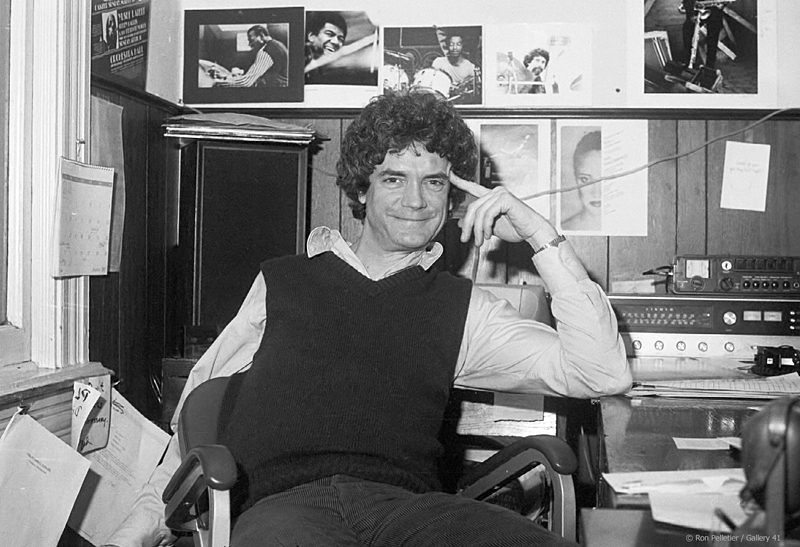
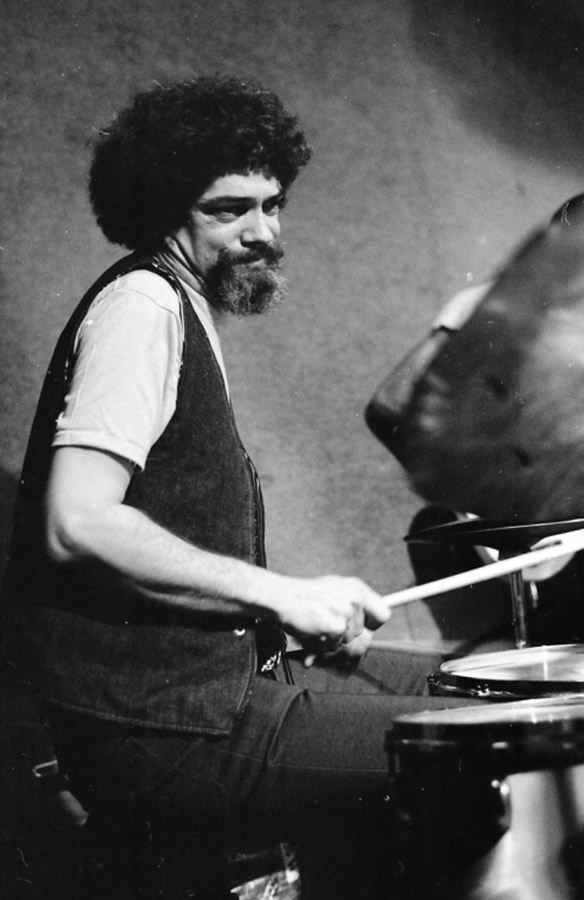
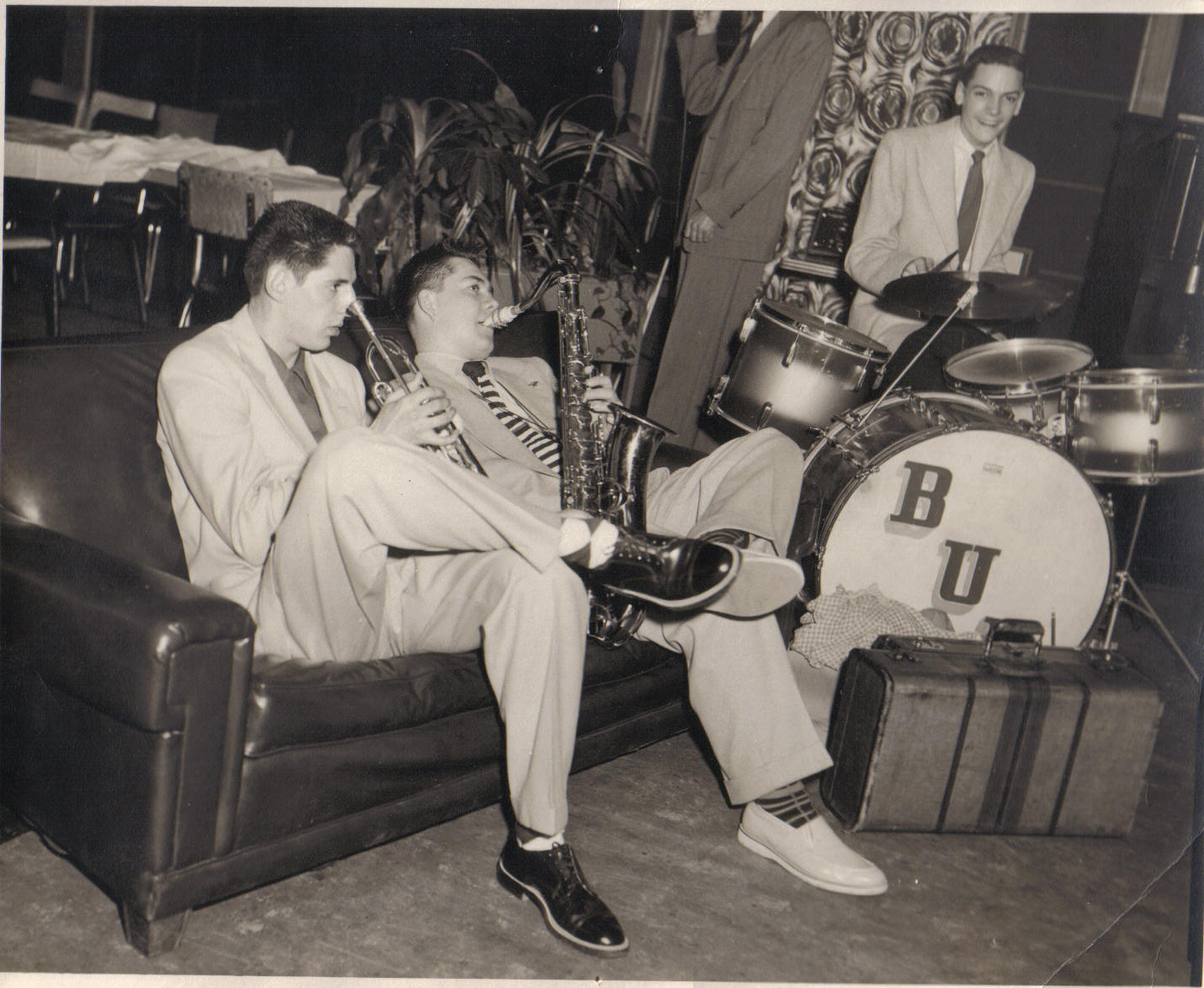
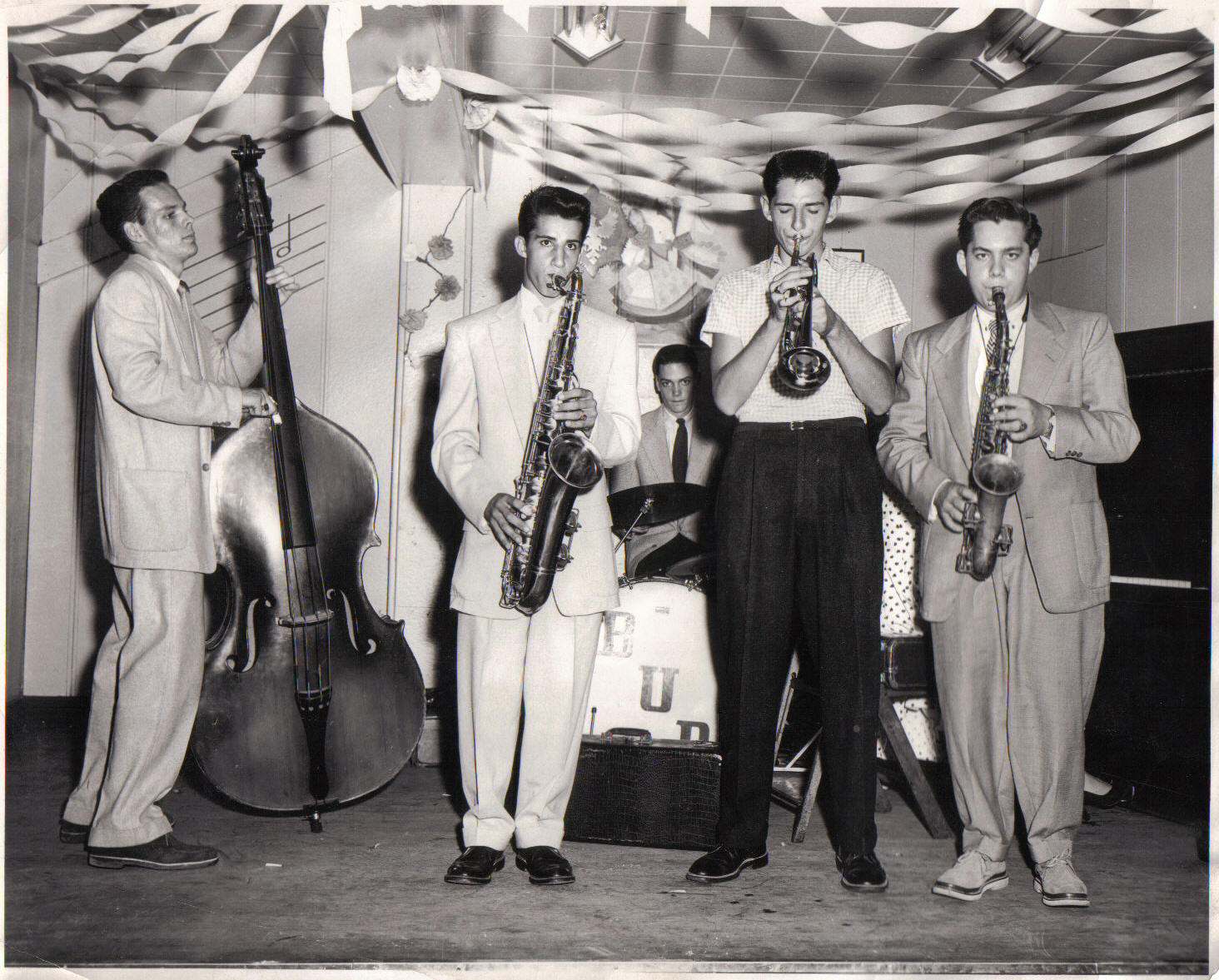
.jpg)
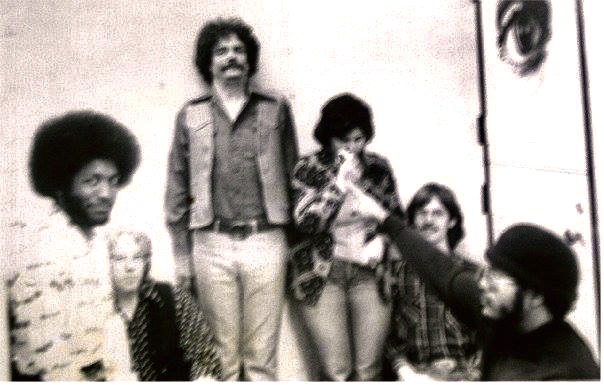
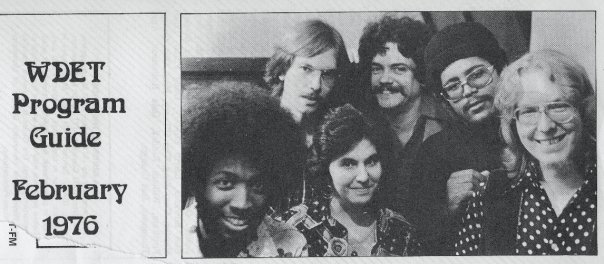
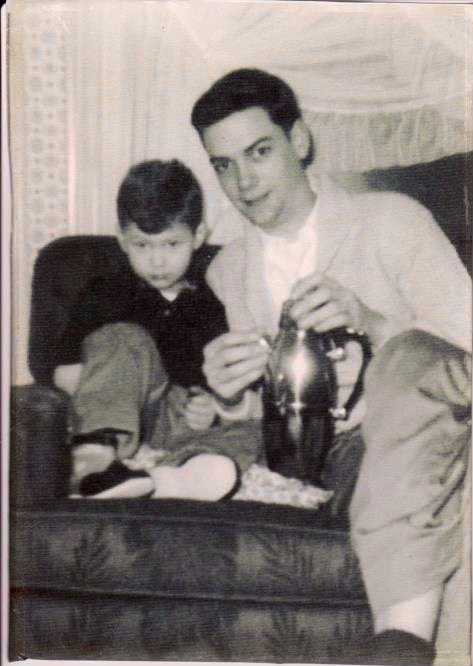



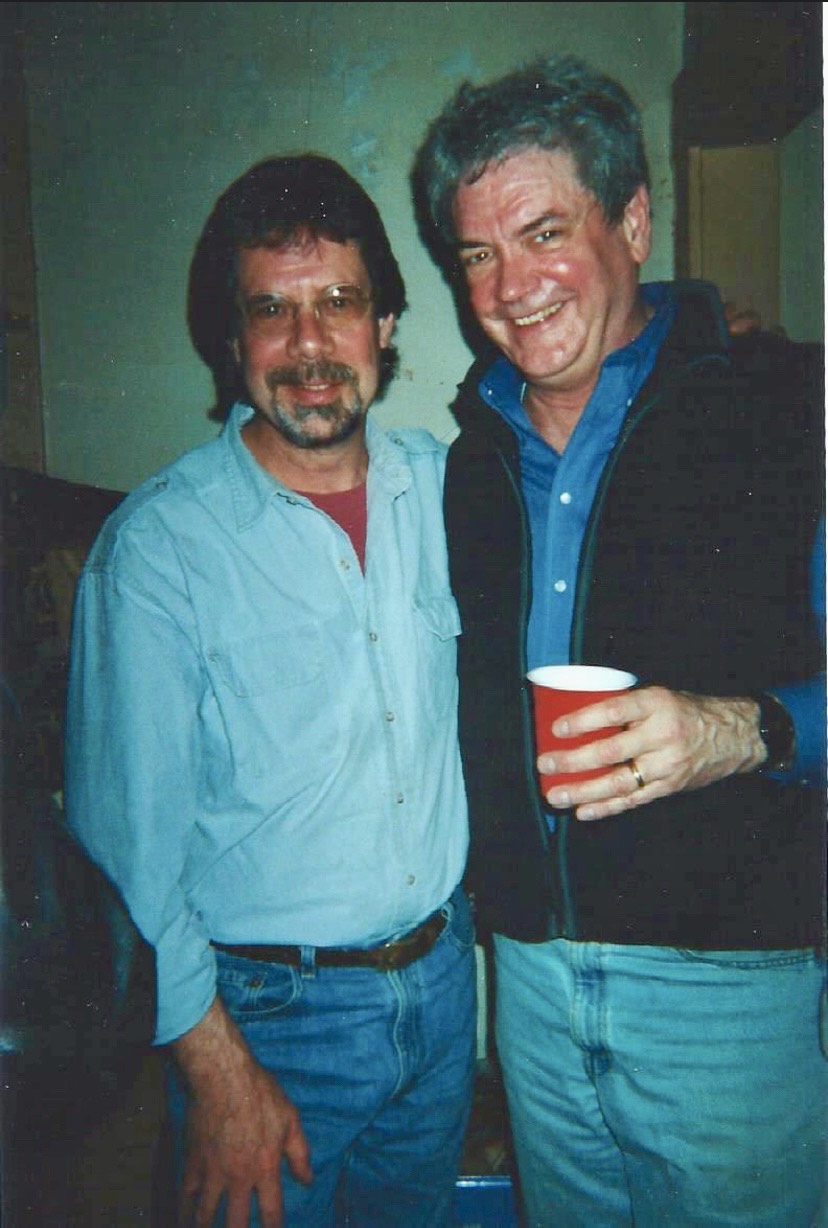


jeffdunn.com - Websites for Jazz Artists and more.
